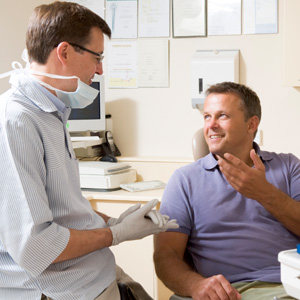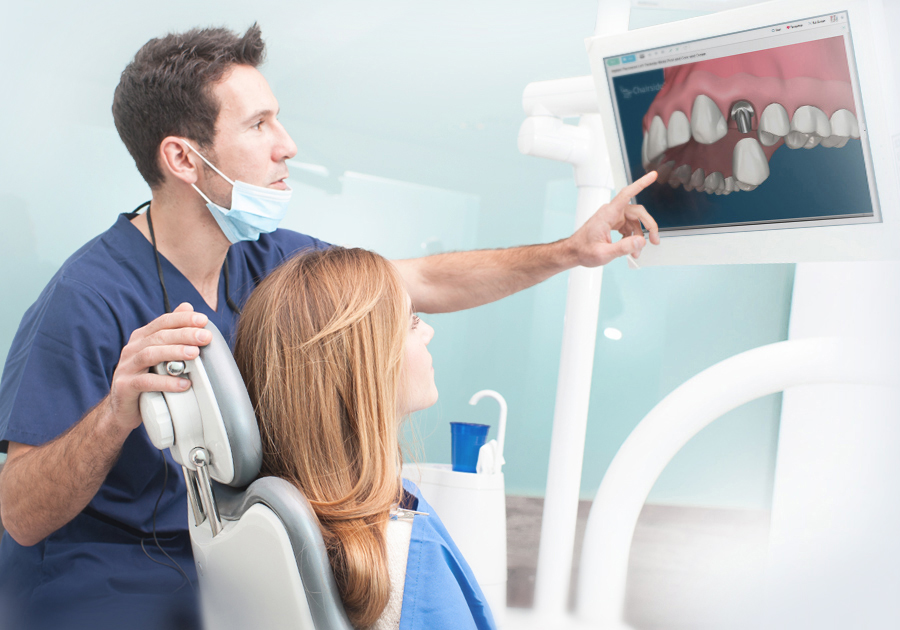Last updated on September 13th, 2018 at 11:52 am
 Comprehensive case acceptance is far easier when the entire team is on board. And by that I mean you want one and all aligned with the mission of providing your patients with the best possible care to help them live healthier, longer lives. With this in mind, there are five critical roles pertaining to case acceptance which can easily break down if everyone doesn’t carry out their part of the process. They are:
Comprehensive case acceptance is far easier when the entire team is on board. And by that I mean you want one and all aligned with the mission of providing your patients with the best possible care to help them live healthier, longer lives. With this in mind, there are five critical roles pertaining to case acceptance which can easily break down if everyone doesn’t carry out their part of the process. They are:
1.     Appointing Patients
Whoever answers the phone and schedules new patients must be able to “sell” the patient on coming in for an exam to see the doctor. Admittedly, handling the phone properly could be its own article, but this staff member must be able to get through “Do you take my insurance?”, “How much is it for a crown?”, “Do you have Saturday hours?”, etc. Whoever handles these calls in your office must be drilled and drilled to the point where they could handle anything a prospective new patient throws at them without having to “think” about it. Ideally they should be able to get a prospective new patient to schedule and come in at least 70% of the time. As in all sales, it’s unrealistic to close everyone, but a log book, spreadsheet or some type of record must to be kept to reflect all new patient calls and show the result of each one. Doing this will not only record your level of success but will also point out patterns of troublesome objections that the staff can be taught how to handle.
We actually offer a full Receptionist Training Course on our online training platform, DDS Success, which trains anyone to be a competent receptionist who can handle these types of questions seamlessly; I highly recommend giving it a look.
(Related: 7 Steps to Comprehensive Case Acceptance, Part 1)
 2.     Doctor as Diagnostician
2.     Doctor as Diagnostician
The patient is in the chair. Now it’s critical to diagnose exactly what the patient needs with no regard for their insurance coverage or apparent financial situation. We have fallen into a bad pattern in dentistry of inspecting the insurance plan before inspecting the mouth. We are trying to diagnose the patient’s attitude about dentistry or their finances before diagnosing what they need in order to have a healthy mouth. We then let that affect how much dentistry we diagnose and treatment plan.
It is critical that the doctor examine each patient as if they were a close friend or relative. Forget about insurance coverage or lack of apparent finances. Diagnose the patient sitting in front of you for what they need to restore their mouth to optimal health. Without a comprehensive diagnosis there is no chance of them receiving an optimum treatment plan. We’ll worry about getting them through their objections or barriers next.
(Related: 3 Case Acceptance Killers)
3.     The Case Presentation
At MGE, we teach our clients that the doctor is best at handling the patient’s objections. They are, after all, the authority and the one who created the treatment plan. But whether it’s the doctor or a staff member presenting treatment, handling objections should be done by someone who has a clear purpose and truly believes that every patient should receive optimum dental care. This should be the underlying purpose behind the case presentation. Patients live longer if they have optimum dental health so this process can’t be undertaken flippantly or rushed.
If it’s a staff member presenting the treatment (i.e. Office Manager or Treatment Coordinator, etc.) they should be instructed to go get the doctor if the patient wishes to change the treatment plan or wait (or not do it at all). Staff should not be making these decisions as that’s the doctor’s job. Faced with this, when the patient balks, a simple, “I understand. Let me go get the doctor,” can work wonders with case acceptance. In many cases the patient might just come off of their objection and move ahead or when the doctor comes to talk with them, he or she finds an underlying concern or question which was never addressed.
(Related: The “Right” Words to Use During Case Presentations)
For the doctor, I’d recommend a) presenting their full treatment plan and b) trying to help patients through their barriers so that they accept their full treatment plan. At the very least, if they won’t do the whole thing, get their agreement to return for at least the first part of what was diagnosed. Then add ten or fifteen minutes onto that next visit to discuss the balance of the treatment plan. Not many patients like having needles and drills inside their mouth, so be patient with them. They may need to hear the treatment plan several times and become more comfortable with you as their dentist before they finally agree to having all necessary work completed.
4.      Payment
This is a critical part of the process—not because you’re after their money but because once they pay, you have a ninety-nine percent chance that they will return and have the necessary treatment completed. In business, nothing is sold until it’s paid for. We’ve fallen into a bad business practice, in dentistry, of doing thousands of dollars of dentistry and then counting on the Financial Secretary to chase up a large accounts-receivable so the bills can be paid.
(Related: Free Seminar: The Effective Case Acceptance Seminar)
 But let’s forget about sound business practices for a second. The patient needs the diagnosed dentistry for the improvement of their health and the extension of their life. We know that no one likes needles and drills inside their mouth, so how do we help assure that they will follow through? Have them pay for it. It’s a simple concept. Once they pay, it is evidence that they are ready to proceed. And while nothing is one hundred percent, once they pay, it’s virtually certain they will return for the treatment. Until they’ve paid, fear can talk them out of it. Paying makes them braver. So help them out and have them pay.
But let’s forget about sound business practices for a second. The patient needs the diagnosed dentistry for the improvement of their health and the extension of their life. We know that no one likes needles and drills inside their mouth, so how do we help assure that they will follow through? Have them pay for it. It’s a simple concept. Once they pay, it is evidence that they are ready to proceed. And while nothing is one hundred percent, once they pay, it’s virtually certain they will return for the treatment. Until they’ve paid, fear can talk them out of it. Paying makes them braver. So help them out and have them pay.
5.      Recall
How is this part of effective case acceptance? It’s because no one “sells them all.”
Now, I firmly believe and worked hard to get patients to agree to getting all active disease out of their mouth or they would have to find another dentist. While each patient had their own individual circumstances, if someone wanted me to be a “patch up dentist” and didn’t care about their teeth, I referred them elsewhere. How could this translate into your practice? Well, this means that you shouldn’t “watch” an obvious carious lesion, periodontal pocketing or periapical abscesses. You handle it….ASAP. It’s definitely a “tough love” approach but we have sometimes gotten too afraid to tell the patient exactly what they need to get healthy. We unnecessarily worry about what they will think if we tell them that they have to leave the practice if they refuse to take X-rays or treat their disease. You’re a doctor and you can’t “supervise” disease.
(Related: How Your Hygienist Can Help Increase Case Acceptance)
But if they preventatively need six crowns and don’t want to proceed immediately, I don’t recommend you dismiss them. This is where an effective recall program comes into play. Get their  agreement to return two, three or four times per year to maintain their oral health. At each of these visits you have another opportunity to enlighten them on why it would be prudent to do their preventive work. I would often do this at the new patient exam when explaining that I wanted them to keep their teeth the rest of their life and live longer.
agreement to return two, three or four times per year to maintain their oral health. At each of these visits you have another opportunity to enlighten them on why it would be prudent to do their preventive work. I would often do this at the new patient exam when explaining that I wanted them to keep their teeth the rest of their life and live longer.
A healthy practice is adding at least one day of hygiene every year—if not every six months. This should be a coordinated effort of all team members: the hygienist sets up the next visit when finished with the current visit, the assistant talks to the patient about their next recall visit when dismissing the patient after their last operative appointment, and all staff say goodbye with “See you in six months.” This message, reinforced by each staff member, will make all the more real how important maintenance is and that the entire team is on the same page.
So, there you have it. Comprehensive case acceptance is a team activity. If everyone is on the same page, your patients and your practice will be far healthier. In fact, our free seminar, How to Build Your Dental Dream Team can help you achieve just that. If you have any questions about this, please feel free to contact me at greg@mgeonline.com or call (727) 530-4277.



One Response to “Comprehensive Case Acceptance is a Team Activity”